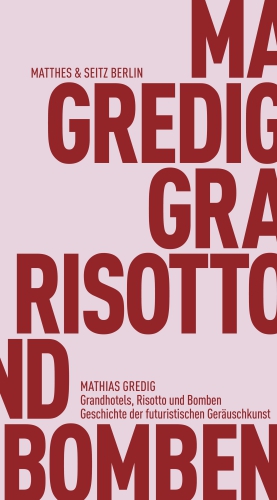The orchestras of the grand hotels could only be heard mixed with noise. The program for Luigi Russolo's quirky noise art emerged from this overall sound. This has less to do with a passion for industry and machines and more to do with stuffed quail thighs, bands playing in vestibules or the parks and colonnades of spa towns. Between 1909 and 1921, money and its contempt, anarchism and fascism, futurism and the avant-garde culminated there and in the Lombard metropolis.
Based on unknown documents, Mathias Gredig reconstructs this unique and fleeting historical moment, not only turning futurism research upside down, but also proposing a new aesthetic and historical classification of noise art as well as the early avant-garde and bourgeois popular music as a whole. Accompanied by Russolo's noise intonators, he tells an unprecedented story: of the Milan risotto, of fanatics, war veterans and esotericists, of anarchist and fascist agitations, of bomb attacks and their surroundings, which migrate into the music.
Essay
Mathias Gredig completed his doctorate at the University of Basel and lives as an author and researcher in the Engadin.







